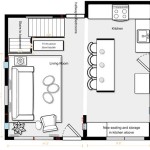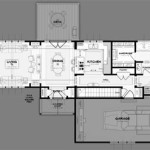Designing Your Own Home Floor Plans
Creating your own home floor plans can be a daunting task, but it's also incredibly rewarding. With careful planning and attention to detail, you can design a home that perfectly meets your needs and style.Step 1: Gather Your Requirements
Before you start drawing, take some time to think about your needs and wants for your home. Consider the number of bedrooms, bathrooms, and other rooms you'll need. Think about how you want to use the space and what activities you'll be doing in each room.Step 2: Sketch Out Your Ideas
Once you have a good idea of your requirements, start sketching out your ideas. Don't worry about making it perfect at this stage, just focus on getting your thoughts down on paper. Draw rough outlines of the rooms and experiment with different layouts.Step 3: Use Design Software
Once you have a basic sketch, you can use home design software to create a more detailed plan. There are many different software programs available, so choose one that fits your budget and skill level.Step 4: Consider Functionality and Aesthetics
As you design your floor plan, keep both functionality and aesthetics in mind. Make sure the layout flows well and that the rooms are easy to access and navigate. Also consider the overall look and feel of the home. Choose finishes and materials that complement the architectural style and create the ambiance you want.Step 5: Get Feedback
Once you have a draft of your floor plan, share it with friends, family, or a professional designer for feedback. This can help you identify any areas that need improvement or optimization.Step 6: Finalize Your Plans
After incorporating feedback, finalize your floor plans and make sure they are accurate and complete. You may need to consult with a contractor or engineer to ensure the plans are structurally sound and meet building codes.Tips for Designing Your Own Floor Plans
*Use graph paper:
This makes it easier to keep your drawings to scale. *Consider the scale of your furniture:
Make sure the rooms are large enough to accommodate your furniture comfortably. *Pay attention to natural light:
Position windows and doors to maximize natural light and create a sense of spaciousness. *Don't overlook storage:
Plan for ample storage space throughout the home. *Think about the future:
Consider how your needs may change over time and design a home that can accommodate those changes. Designing your own home floor plans can be a challenging but rewarding experience. By carefully considering your needs, using design software, and getting feedback, you can create a home that is both functional and beautiful.
House Plans How To Design Your Home Plan

Design Your Own Home House Designing Homes

Floor Plans Learn How To Design And Plan

House Plans How To Design Your Home Plan

House Plans How To Design Your Home Plan

Floor Plans Learn How To Design And Plan

Creating Your Dream Custom Floor Plan Citadel Signature Homes

Floor Plans How To Design The Perfect Layout Cherished Bliss

House Plans How To Design Your Home Plan

Custom Home Layouts And Floorplans Builder Digest








